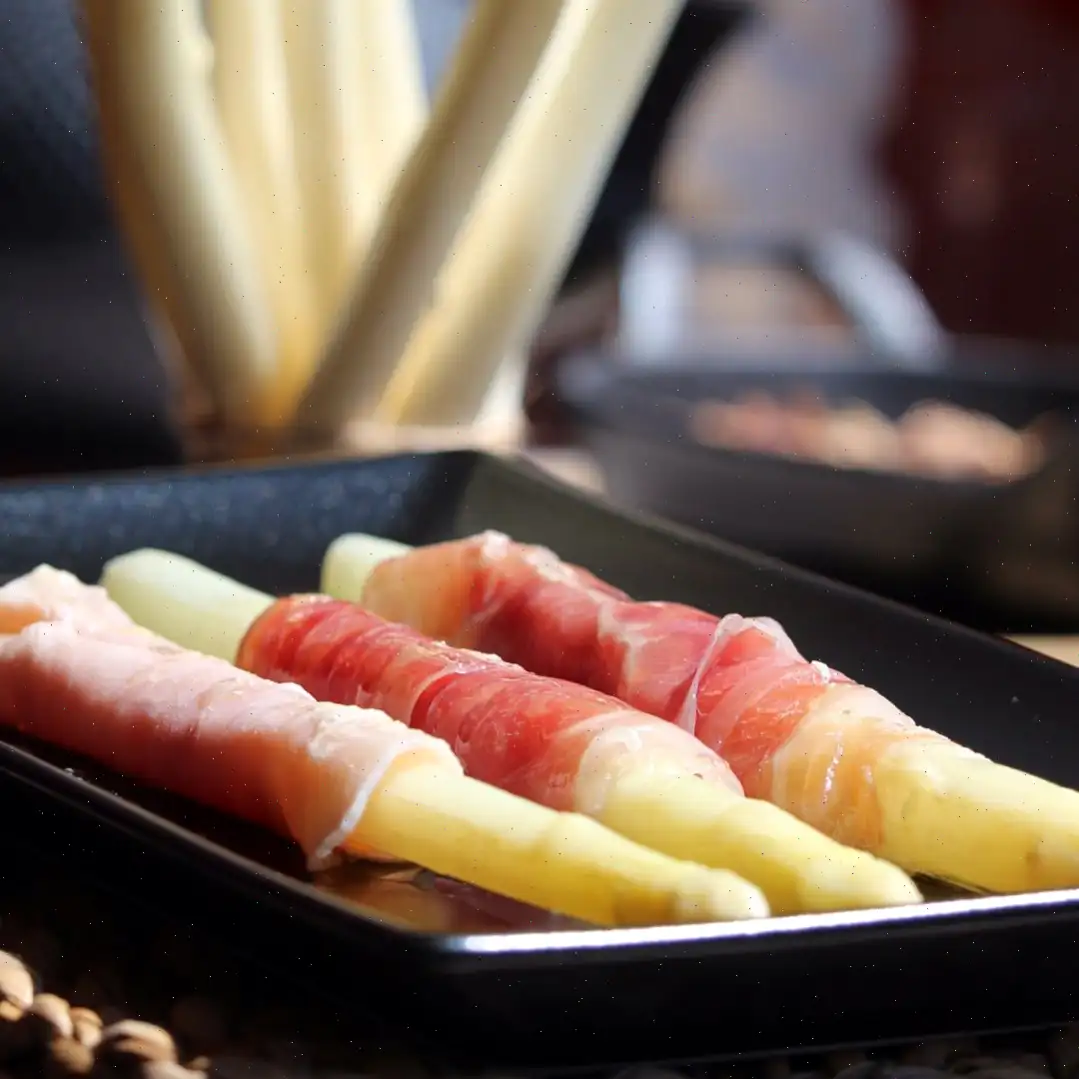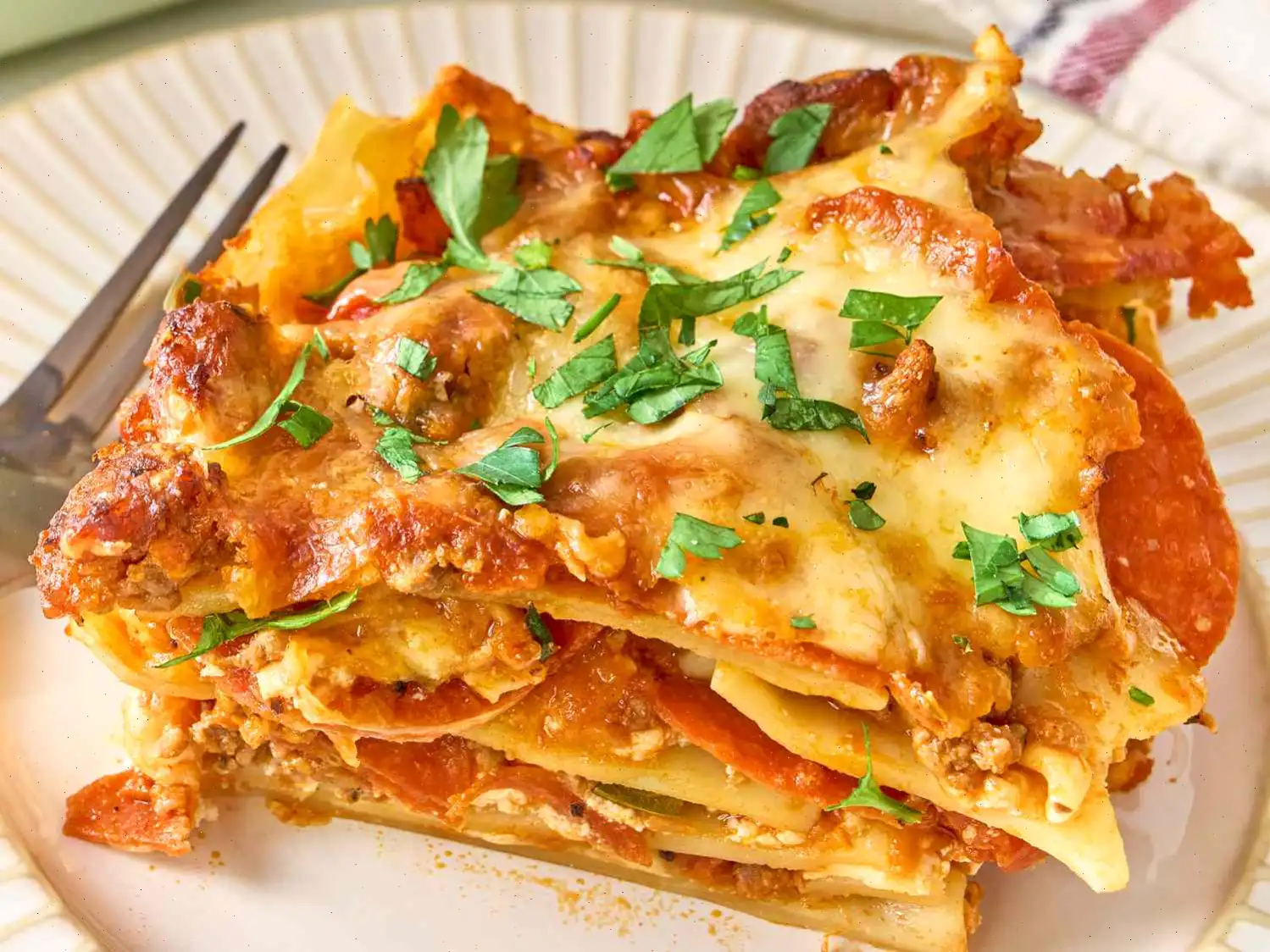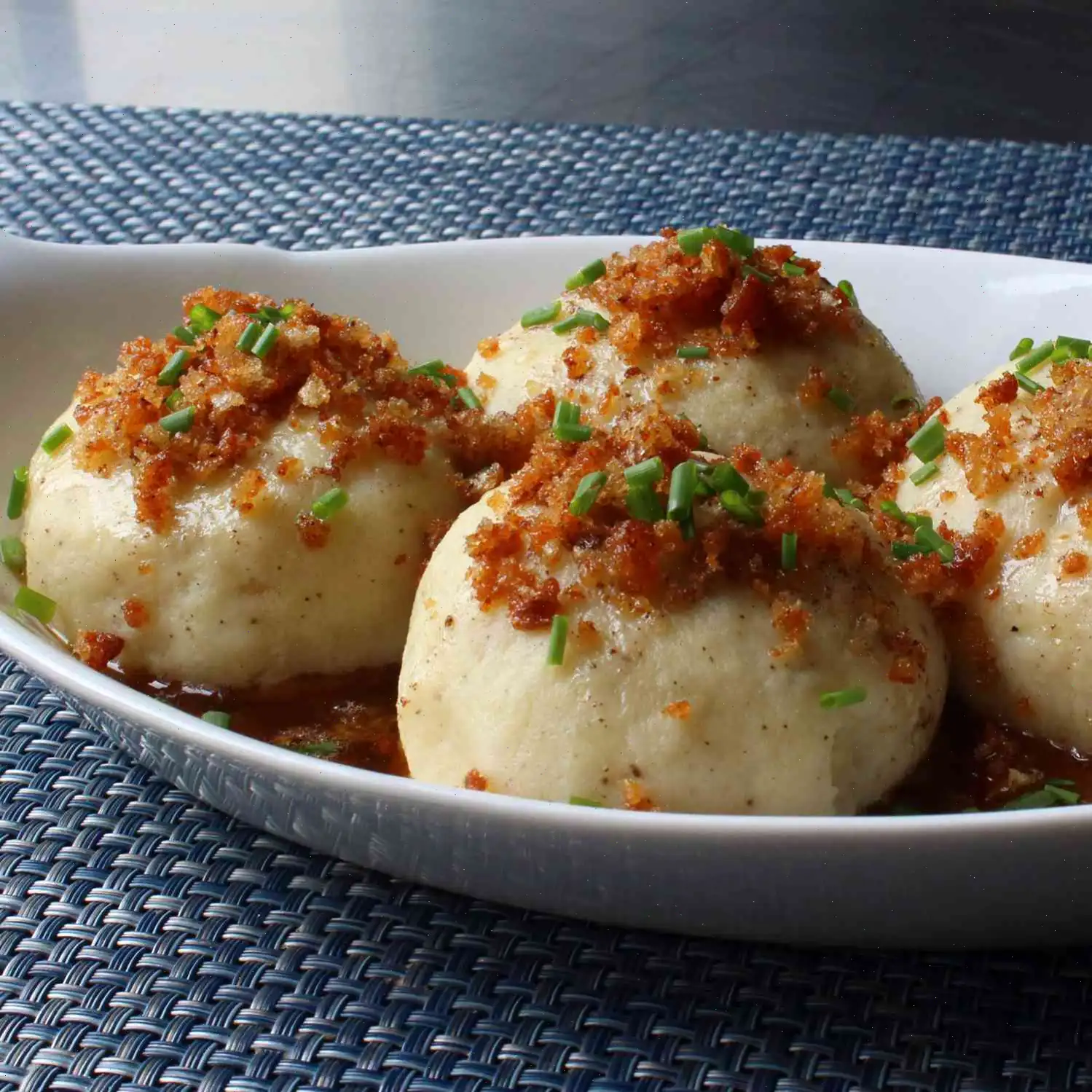
Spargel in Schinken (White Asparagus Wrapped in Ham) Recipe
Asparagus with Ham Recipe
Ingredients
- 2 pounds white asparagus
- Salt, to taste
- cup butter, divided
- 1 pinch white sugar
- 7 ounces sliced ham
Directions
- Peel the asparagus spears from top to bottom using a vegetable peeler, starting just below the tips. Cut off the woody ends with a knife.
- Place the prepared asparagus in a large, wide saucepan and pour in enough lightly salted water to cover the spears. Bring the water to a boil.
- Once boiling, add 1 tablespoon of butter and a pinch of sugar to the water. Reduce the heat and simmer for 15 to 25 minutes, or until the asparagus is tender and easily pierced with a knife.
- Drain the asparagus well and set aside.
- In a small pot, melt the remaining 3 tablespoons of butter over low heat.
- Wrap each asparagus spear with a slice of ham, then arrange them on a serving plate.
- Drizzle the melted butter over the ham-wrapped asparagus before serving.
Nutrition Facts (per serving)
- Calories: 274
- Total Fat: 21g (27% Daily Value)
- Saturated Fat: 11g (53% Daily Value)
- Cholesterol: 58mg (19% Daily Value)
- Sodium: 755mg (33% Daily Value)
- Total Carbohydrate: 10g (4% Daily Value)
- Dietary Fiber: 5g (19% Daily Value)
- Total Sugars: 5g
- Protein: 15g (30% Daily Value)
- Vitamin C: 31mg (35% Daily Value)
- Calcium: 68mg (5% Daily Value)
- Iron: 6mg (32% Daily Value)
- Potassium: 671mg (14% Daily Value)
* Percent Daily Values are based on a 2,000-calorie diet. Your daily values may vary depending on your calorie needs.
Origin and History
The dish "Spargel in Schinken" has its roots in Germany, where white asparagus is highly celebrated, particularly during the spring months. Known as "Spargelzeit" or asparagus season, which typically runs from mid-April to June, this vegetable takes center stage in many German meals. Asparagus, in its white form, is grown underground to prevent it from turning green, giving it a delicate flavor and tender texture that is much sought after during its brief growing season.
The tradition of wrapping asparagus in ham likely dates back to the rich culinary culture of Germany, where pork and ham are often paired with vegetables for a balanced and hearty dish. While the exact origin of Spargel in Schinken remains unclear, it is widely believed to have been popularized in German homes and restaurants as a seasonal delicacy that showcases the best of both fresh, local produce and the savory flavors of cured meats.
Regional Variations
In Germany, the dish is most commonly associated with the southern regions, especially Baden-Wrttemberg and Bavaria, where asparagus fields are abundant. In these areas, local asparagus farmers often harvest the crop by hand, ensuring the spears maintain their high quality. While the basic concept of wrapping white asparagus in ham is fairly consistent, variations exist depending on local preferences. Some regions may use different types of cured meats, such as prosciutto or local smoked ham, adding a distinct twist to the dish.
Additionally, the method of serving can vary. In some parts of Germany, Spargel in Schinken is served as a side dish, while in other areas it is enjoyed as a main course, often paired with boiled potatoes or a creamy mustard sauce. The use of butter to drizzle over the wrapped asparagus is a common practice throughout Germany, but the amount and preparation can be adapted based on personal or regional tastes.
Comparison with Similar Dishes
Spargel in Schinken shares similarities with other dishes that combine vegetables with cured meats. One of the most comparable dishes is the Italian "Asparagi in Camicia," where asparagus is wrapped in prosciutto and baked or grilled. However, the German version tends to focus more on simplicity and allows the flavor of the white asparagus to shine, while the Italian counterpart often includes additional seasoning or grilling to impart a smokier flavor. Another similar dish is the French "Asperges au Jambon," which features asparagus wrapped in ham, but often incorporates a creamy bchamel sauce, adding richness to the dish.
What makes Spargel in Schinken unique is its emphasis on fresh, local ingredients and the tender texture of white asparagus, which is prized for its delicate flavor. The addition of butter to the ham-wrapped spears enhances the overall experience, but the dish remains relatively light compared to other meat-heavy vegetable combinations.
Where is it Typically Served?
Spargel in Schinken is a beloved dish in Germany, particularly in the springtime during asparagus season. It is commonly served in homes, local restaurants, and at traditional spring festivals. Many German restaurants, especially those in rural areas or close to asparagus farms, feature the dish prominently on their menus during the peak of the asparagus harvest. In fact, asparagus festivals in Germany often dedicate entire weekends to celebrating this versatile vegetable, and Spargel in Schinken is one of the highlights.
Outside of Germany, the dish can occasionally be found in German-themed restaurants or at special events focusing on European cuisine. While it is less common in non-German countries, the popularity of international culinary exchanges has led to the dish being appreciated by a broader audience.
Interesting Facts
- White asparagus, unlike green asparagus, is grown underground to prevent photosynthesis, giving it a pale color and a more delicate taste.
- The tradition of eating asparagus in Germany dates back to the 18th century, with nobility and royalty often enjoying elaborate asparagus feasts.
- Asparagus has long been believed to have health benefits, with ancient Greeks and Romans using it for medicinal purposes to treat a variety of ailments.
- In Germany, asparagus farmers use a special technique called "white asparagus mounds," where they create mounds of soil to cover the asparagus spears as they grow, ensuring they remain white and tender.
- While Spargel in Schinken is a classic dish, it is also a seasonal treatmany Germans eagerly await the short but delicious asparagus season every year, making it a symbol of springtime renewal.








